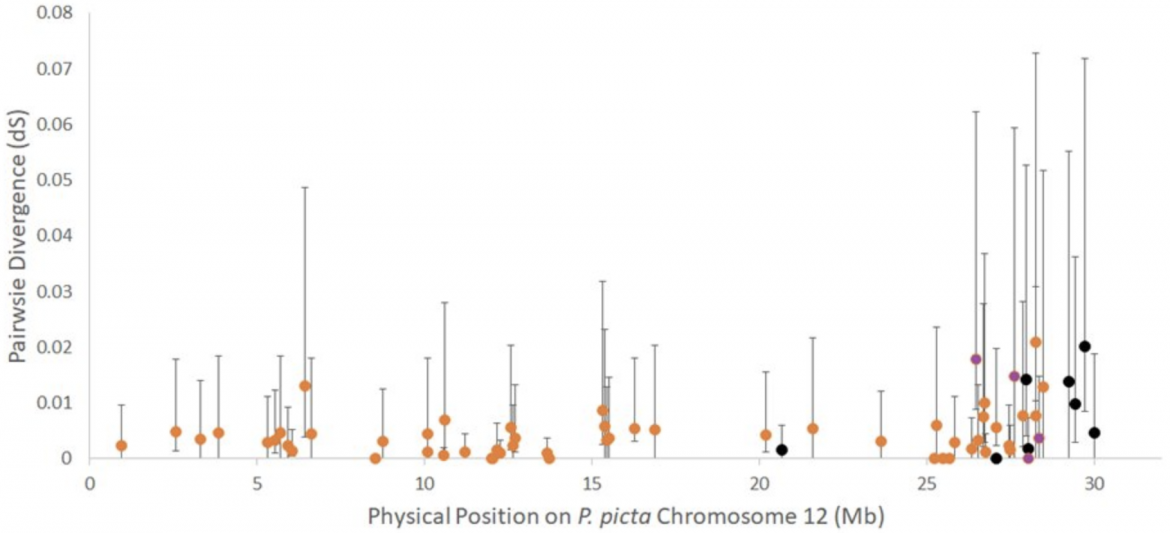
Figure 2. Synonymous substitution rate (dS) of P. picta and P. reticulata sex-linked genes mapped to the physical position of P. picta X Chromosome. P. picta XY genes are in black (n =8), P. reticulata XY genes (from Darolti et al. 2020) are in orange and purple (n = 57). Whiskers represent the standard error. Highlighted in purple are four genes that showed phylogenetic clustering consistent with ancestral recombination suppression in P. reticulata and P. wingei as identified in Darolti et al. 2020 (in order from left to right: alad, LOC103474035, dnajc25, LOC103473940). For clarity, X-Y genes inferred in the P. picta PAR, from 30MB, are not shown
Abstract
The divergence of sex chromosomes is not always proportional to their age. In poeciliids, four closely related species all exhibit a male heterogametic sex chromosome system on the same linkage group, yet show a remarkable diversity in X and Y divergence. In Poecilia reticulata and P. wingei, the sex chromosomes remain homomorphic, yet P. picta and P. parae have a degraded Y-chromosome. To test alternative theories about the origin of their sex chromosomes, we used a combination of pedigrees and RNA-seq data from P. picta families in conjunction with DNA-seq data collected from P. reticulata, P. wingei, P. parae and P. picta. Phylogenetic clustering analysis of X and Y orthologs, identified through segregation patterns, and their orthologous sequences in closely related species demonstrates a similar time of origin for both the P. picta and P. reticulata sex chromosomes. We next used k-mer analysis to identify shared ancestral Y sequence across all four species, suggesting a single origin to the sex chromosome system in this group. Together, our results provide key insights into the origin and evolution of the poeciliid Y chromosome and illustrate that the rate of sex chromosome divergence is often highly heterogenous, even over relatively short evolutionary time frames.